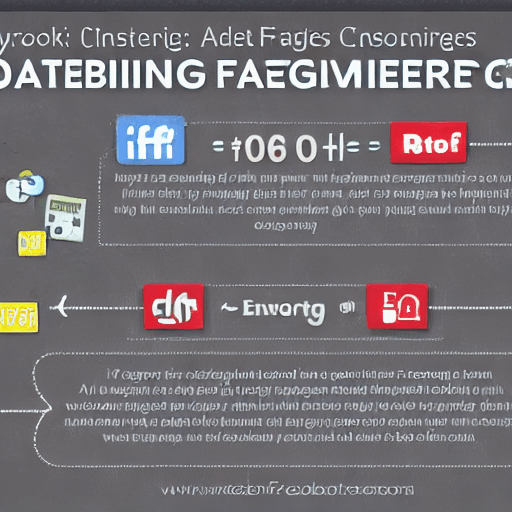

Facebook Ads offer unparalleled reach and targeting capabilities. However, simply running ads isn’t enough. To truly maximize your return on ad spend (ROAS), you need a strategic approach, and one of the most impactful strategies is retargeting. This post delves deep into retargeting strategies for Facebook Ads, specifically focusing on how to re-engage lost customers and drive significant sales. We’ll explore various targeting options, creative best practices, and optimization techniques to ensure your campaigns are delivering the best possible results. This comprehensive guide will equip you with the knowledge and tools to transform your retargeting efforts from a cost center into a powerful revenue driver.
Retargeting, also known as remarketing, is the practice of showing ads to people who have previously interacted with your business. This interaction can take many forms, such as visiting your website, viewing a specific product page, adding an item to their shopping cart, or even engaging with your Facebook page. Essentially, you’re reminding them of your brand and the products or services you offer. It’s a highly effective strategy because it leverages the ‘recency bias’ – people are more likely to consider a brand they’ve recently interacted with. Unlike broad targeting, retargeting allows you to laser-focus your efforts on individuals who already demonstrate interest, dramatically increasing the likelihood of conversion.
There are several distinct types of retargeting you can implement on Facebook Ads:
Setting up your retargeting audiences correctly is crucial. Facebook provides several ways to build these audiences:
The Facebook pixel is the cornerstone of your retargeting efforts. It’s a small piece of code you place on your website to track user behavior. With the pixel, you can create various retargeting audiences based on specific actions:
Uploading your customer email list to Facebook allows you to target existing customers with tailored offers. This is particularly effective for loyalty programs, exclusive promotions, or re-engaging inactive customers. Ensure you comply with all data privacy regulations (like GDPR and CCPA) when uploading customer lists.
Simply showing the same ad to a retargeting audience isn’t enough. You need to tailor your creative to resonate with these users. Here’s how:
Dynamic Ads are a game-changer for retargeting. They automatically show users the products they’ve previously viewed on your website. This is incredibly effective because it eliminates the need for manual ad creation and ensures users see relevant products. Dynamic Ads work best for e-commerce businesses with a substantial product catalog.
Even with Dynamic Ads, you can personalize your messaging. For example, if someone abandoned their cart with a specific product, you could show them an ad featuring that product with a special discount. A/B test different messaging to see what resonates best with your retargeting audience.
Remind users why they were initially interested in your brand. If they viewed a high-end product, emphasize its premium features. If they were researching a particular problem, highlight how your product solves it.
Retargeting isn’t a ‘set it and forget it’ strategy. Continuous optimization and testing are essential for maximizing your ROAS. Here’s what to focus on:
Test different ad creatives, headlines, calls to action, and bidding strategies. Even small changes can have a significant impact on your results.
Experiment with different bidding strategies, such as cost per click (CPC), cost per acquisition (CPA), and target ROAS. Target ROAS allows you to set a desired return on ad spend, and Facebook will automatically adjust your bids to achieve that goal.
Limit the number of times a user sees your ad. Excessive frequency can lead to ad fatigue and negatively impact your results. Consider setting a frequency cap based on your audience size and campaign goals.
Segment your retargeting audiences based on their behavior. For example, you might have separate audiences for website visitors, add-to-cart abandoners, and purchase-made customers. This allows you to tailor your messaging and offers to each group.
Beyond the basics, consider these advanced strategies:
Create lookalike audiences based on your existing customer data. Facebook will identify users who share similar characteristics with your best customers, expanding your reach and targeting potential new customers.
Target users who have made a purchase with exclusive offers or cross-selling recommendations. This is a highly effective way to build customer loyalty and drive repeat sales.
Retarget users who have been inactive on your website for a specific period. This can be a good way to re-engage dormant customers.
Retargeting is a powerful tool for driving sales and building customer relationships. By following these strategies and continuously optimizing your campaigns, you can significantly improve your ROAS and achieve your marketing goals. Remember to always prioritize data privacy and comply with all relevant regulations.
This comprehensive guide provides a solid foundation for implementing effective retargeting campaigns. Good luck!
Tags: Facebook Ads, Retargeting, ROAS, Meta Ads, Ad Optimization, Customer Re-engagement, Conversion Tracking, Custom Audiences, Lookalike Audiences, Dynamic Ads, Conversion Campaigns, Remarketing, Ad Spend Optimization
0 Comments